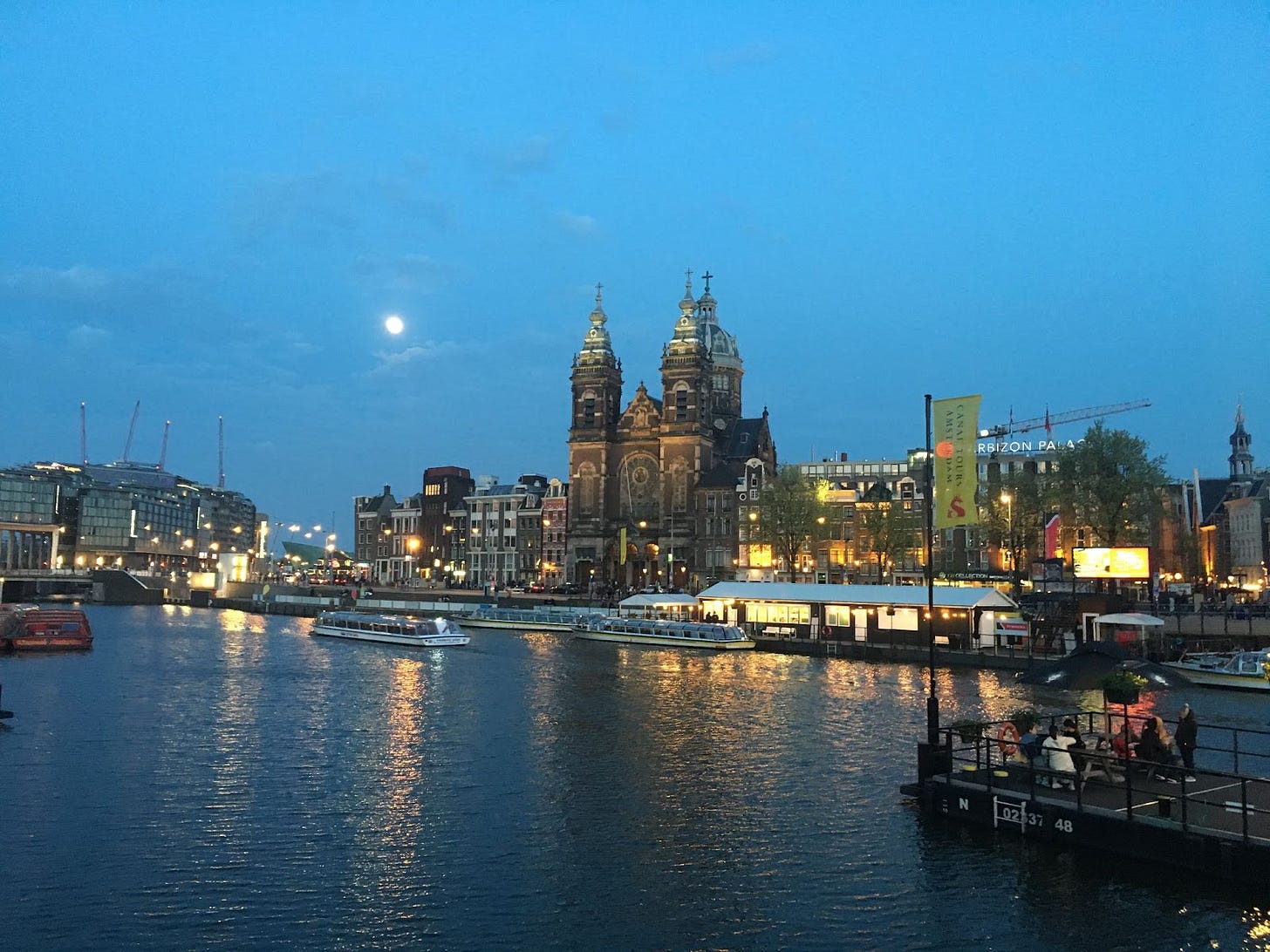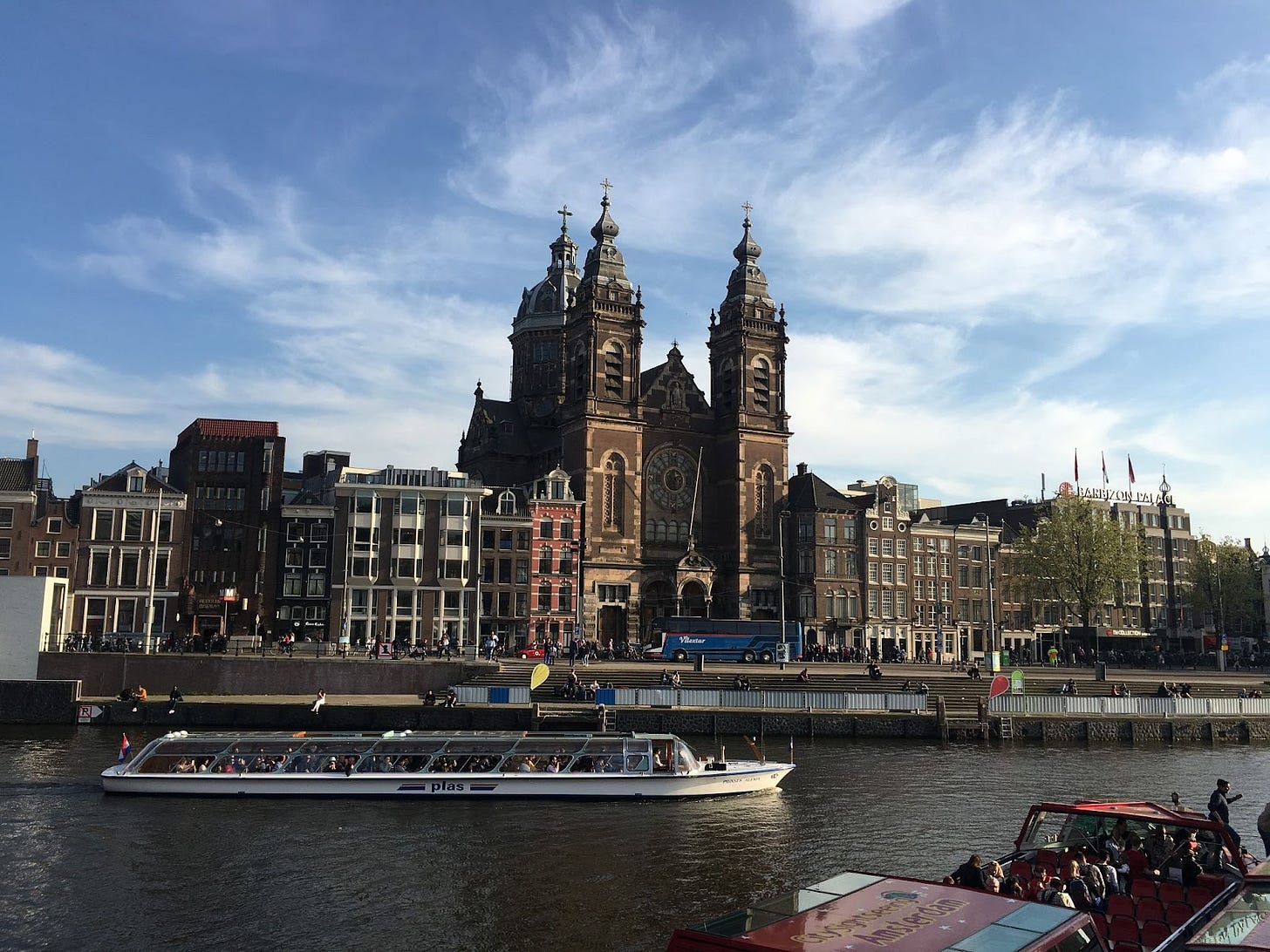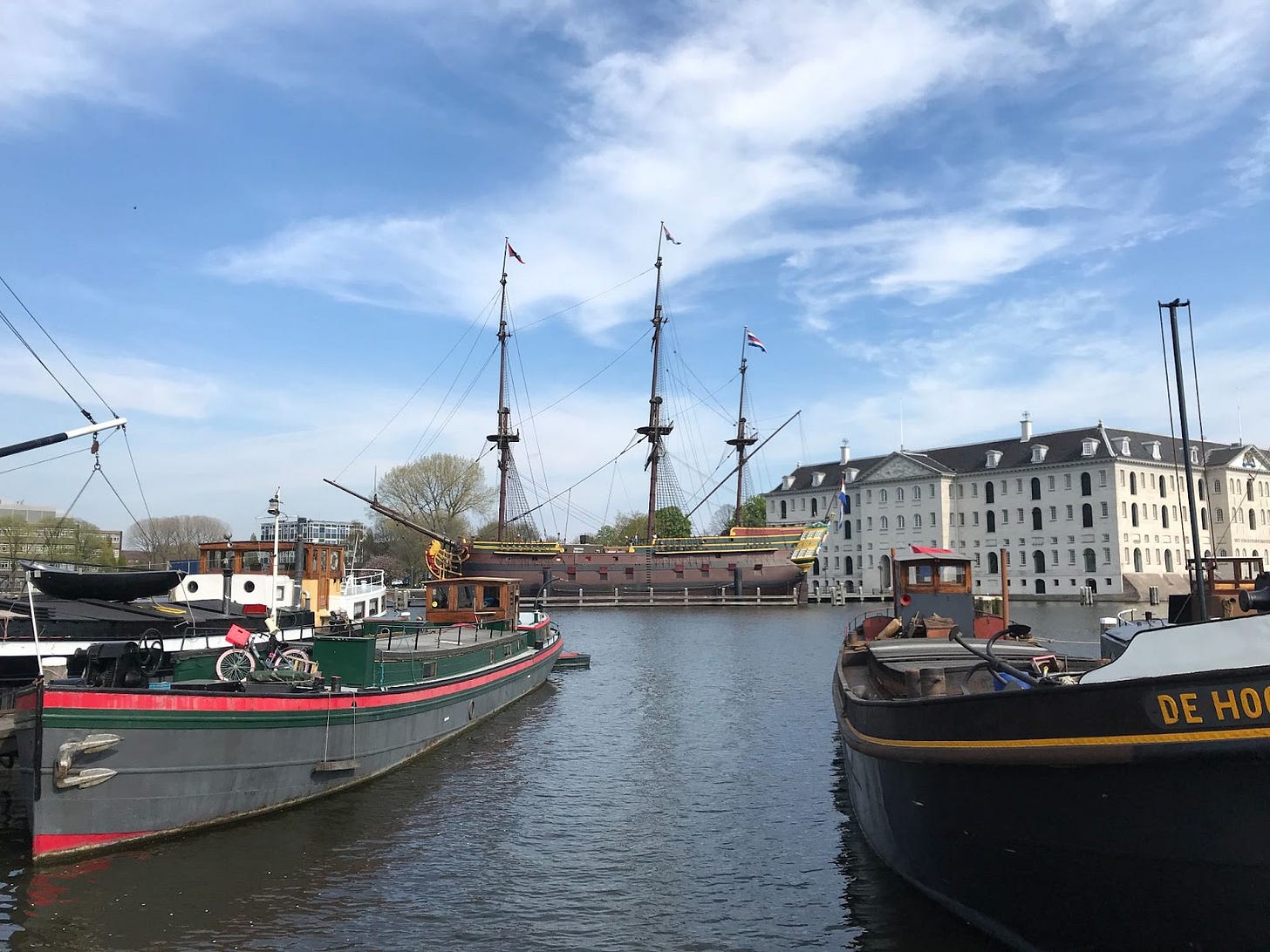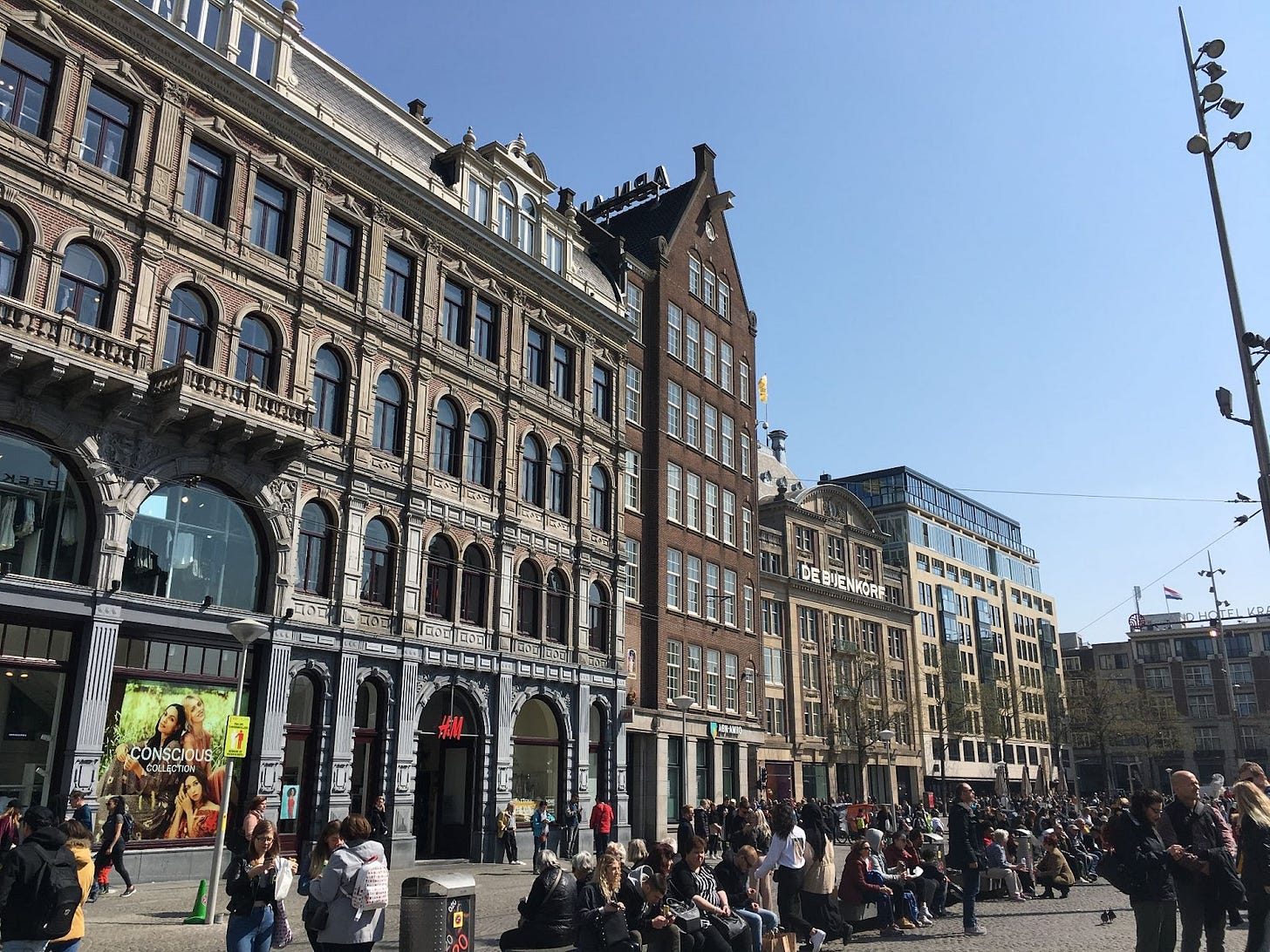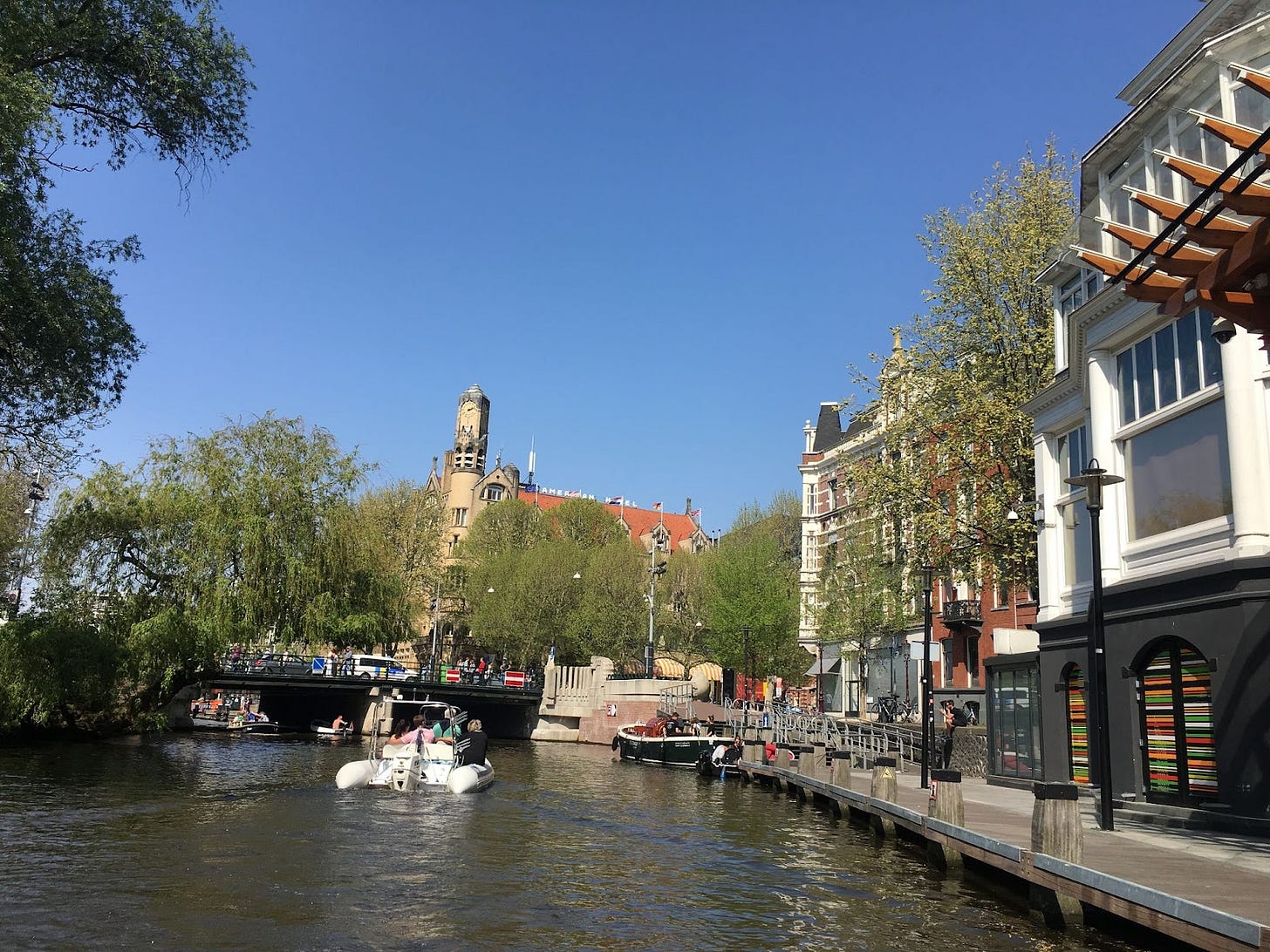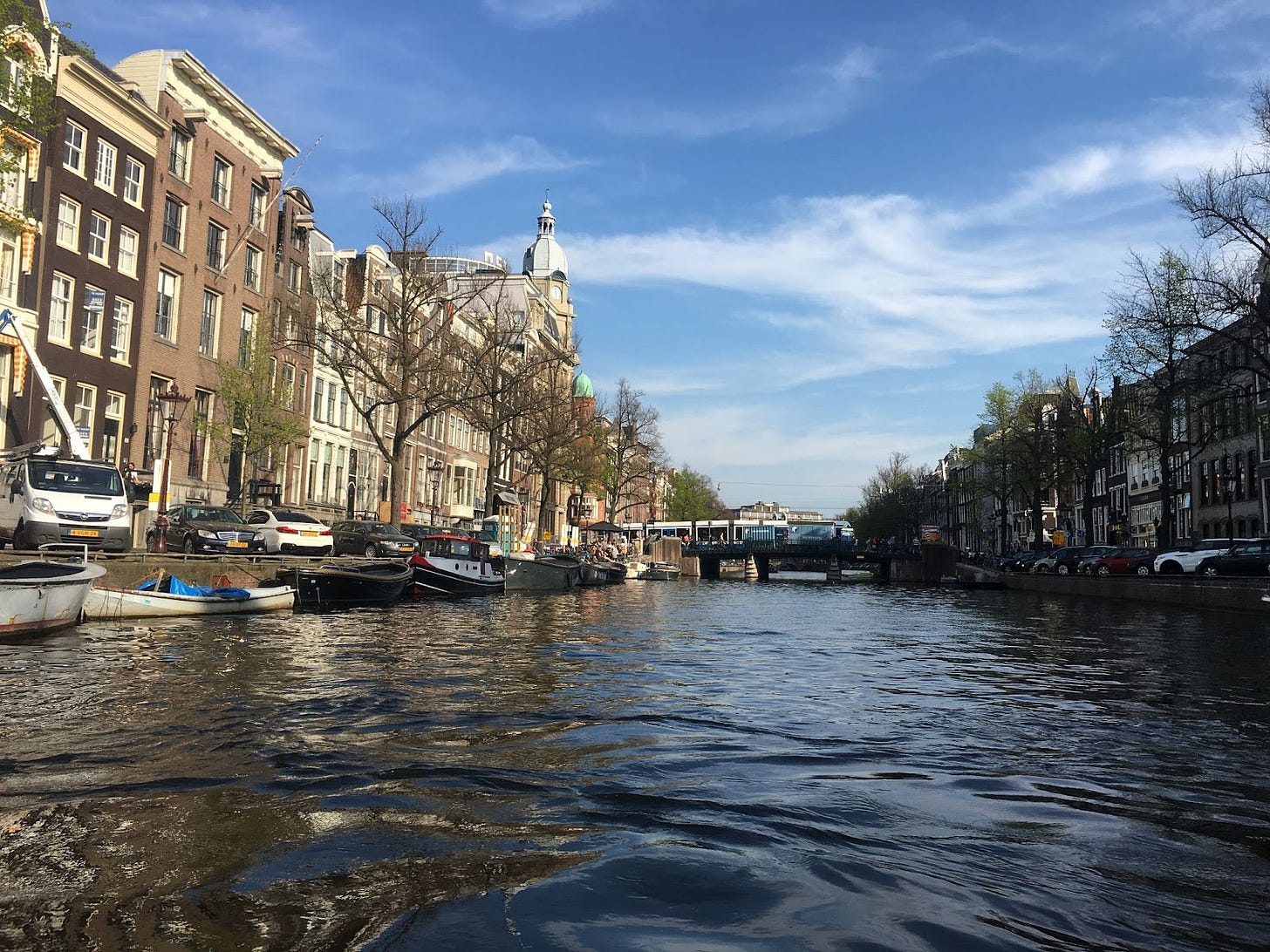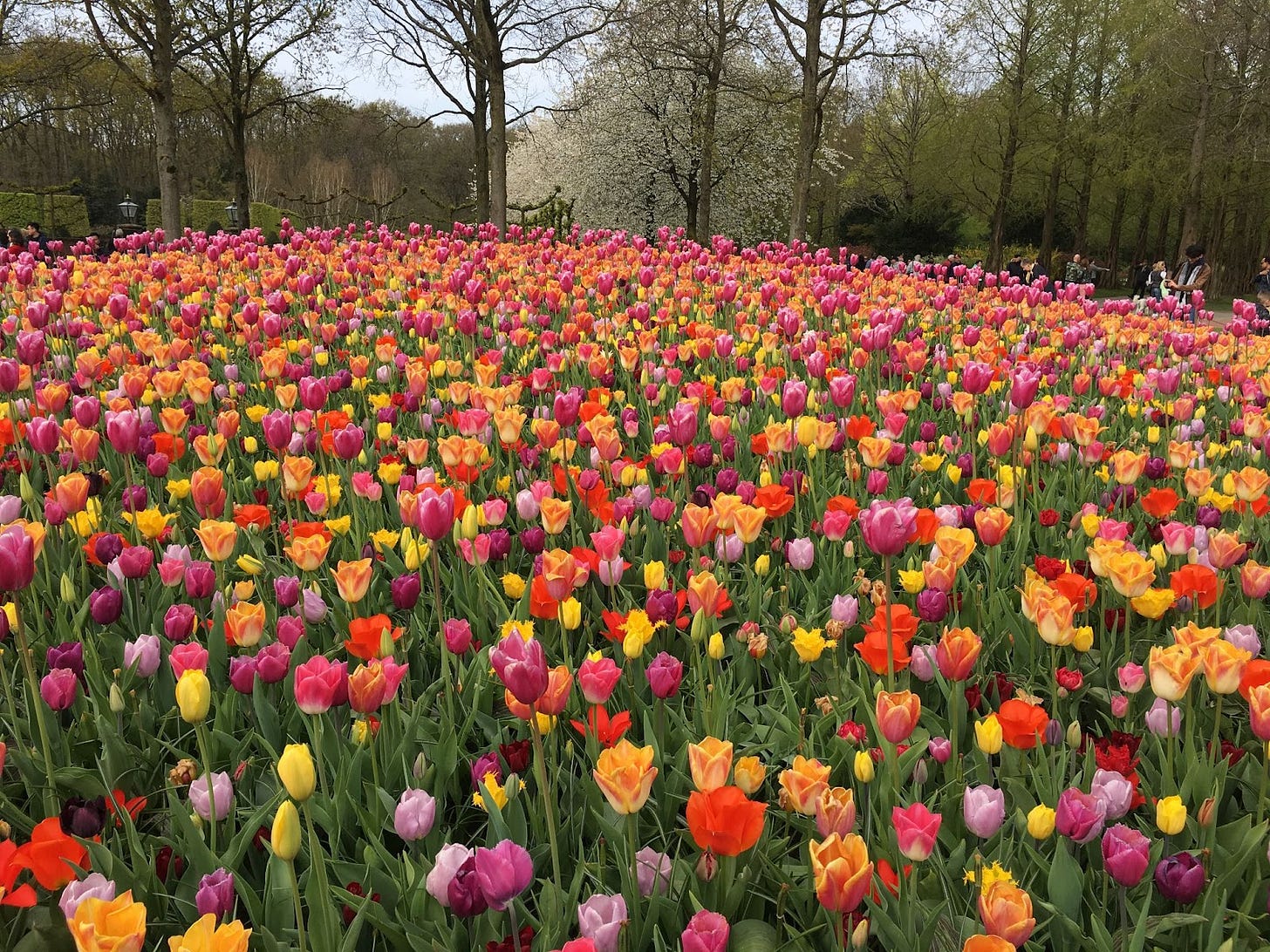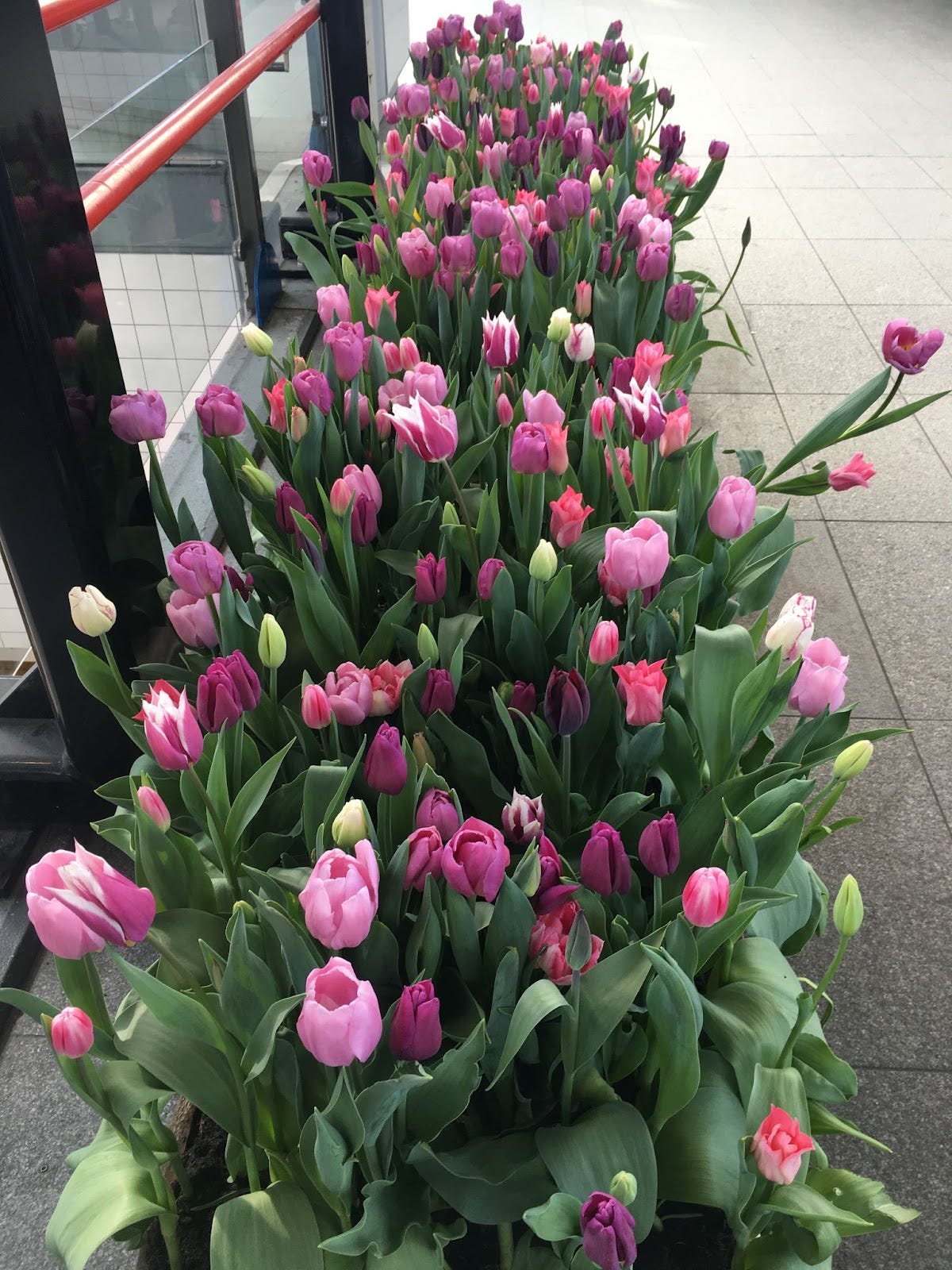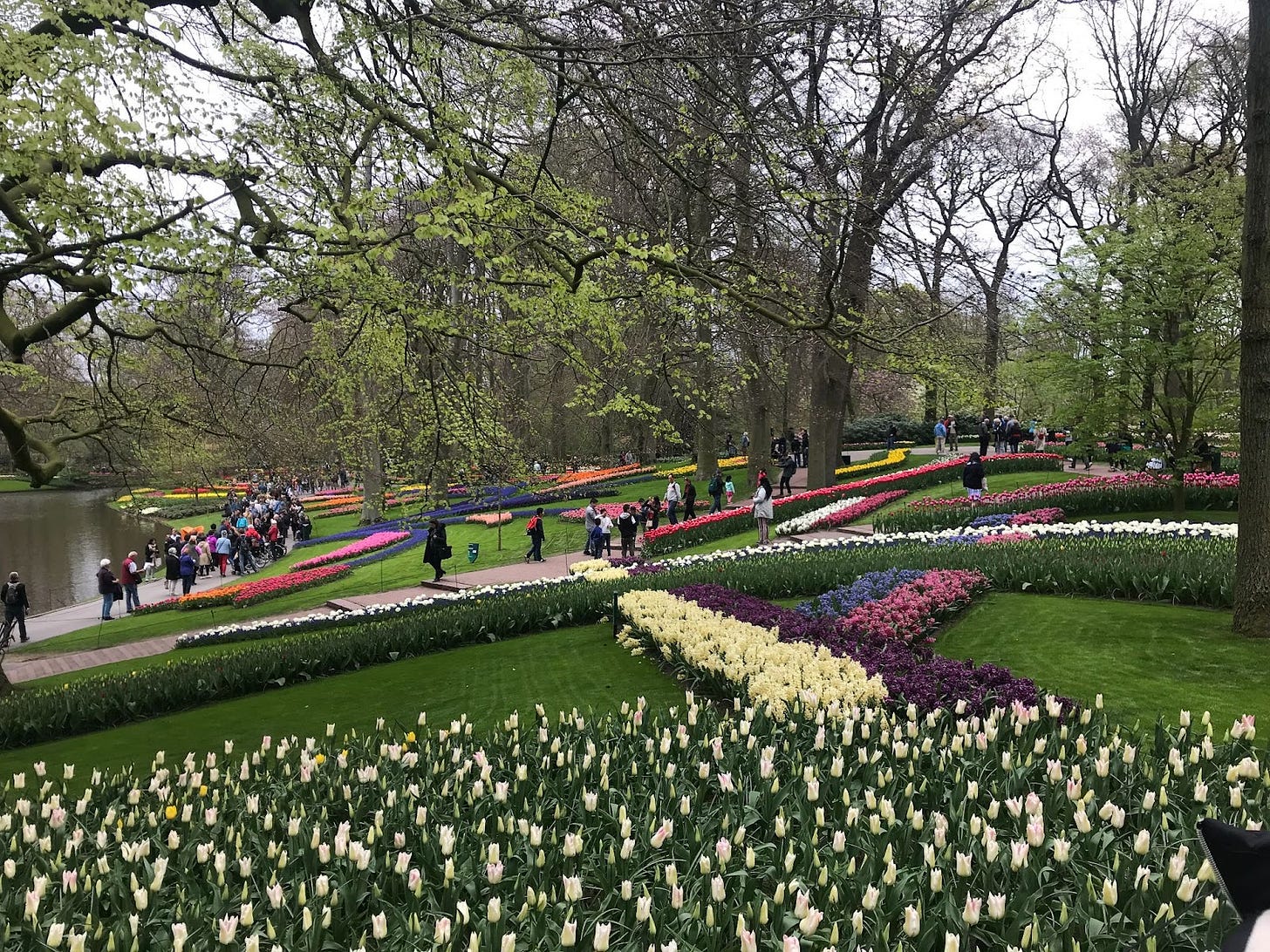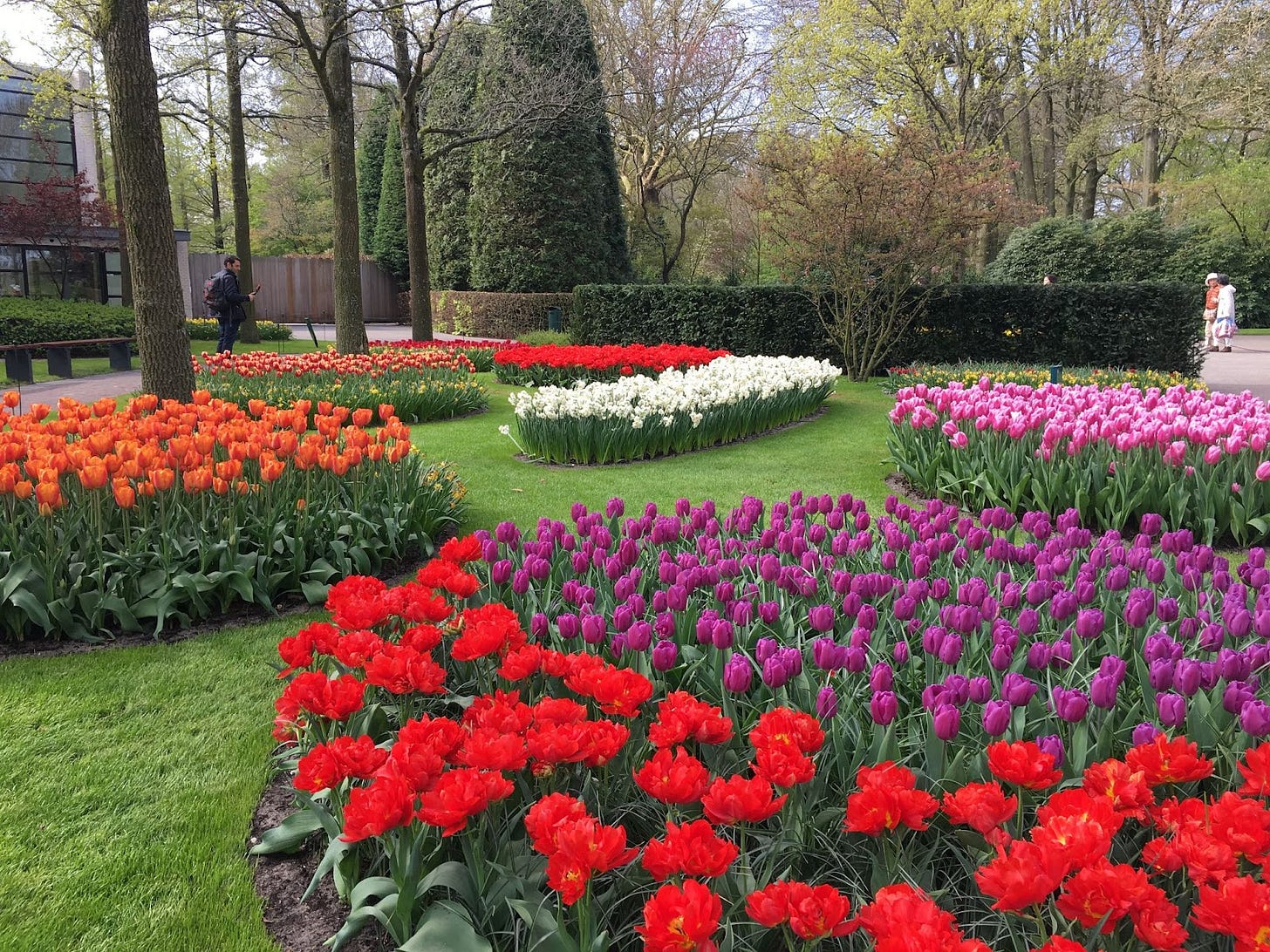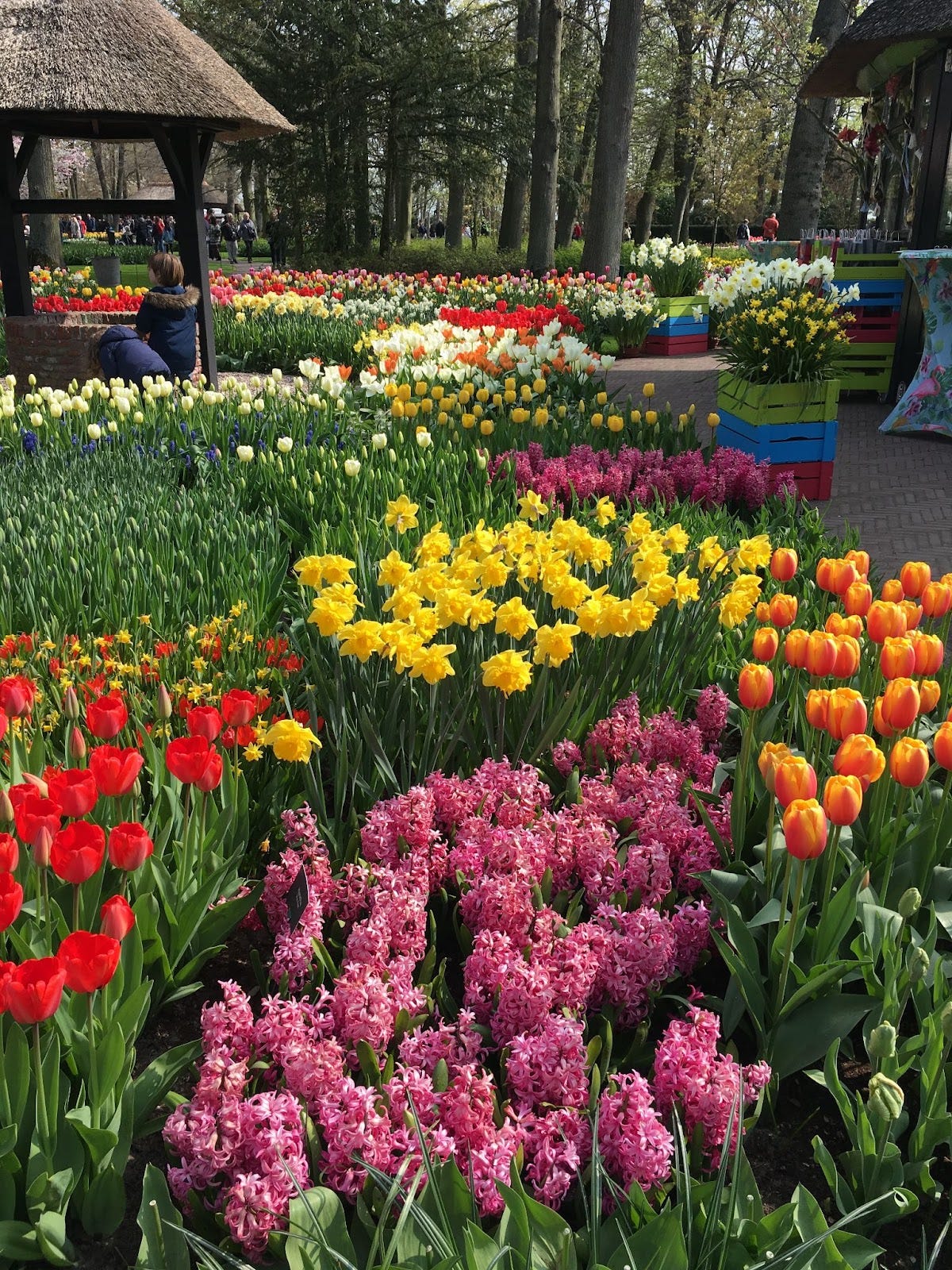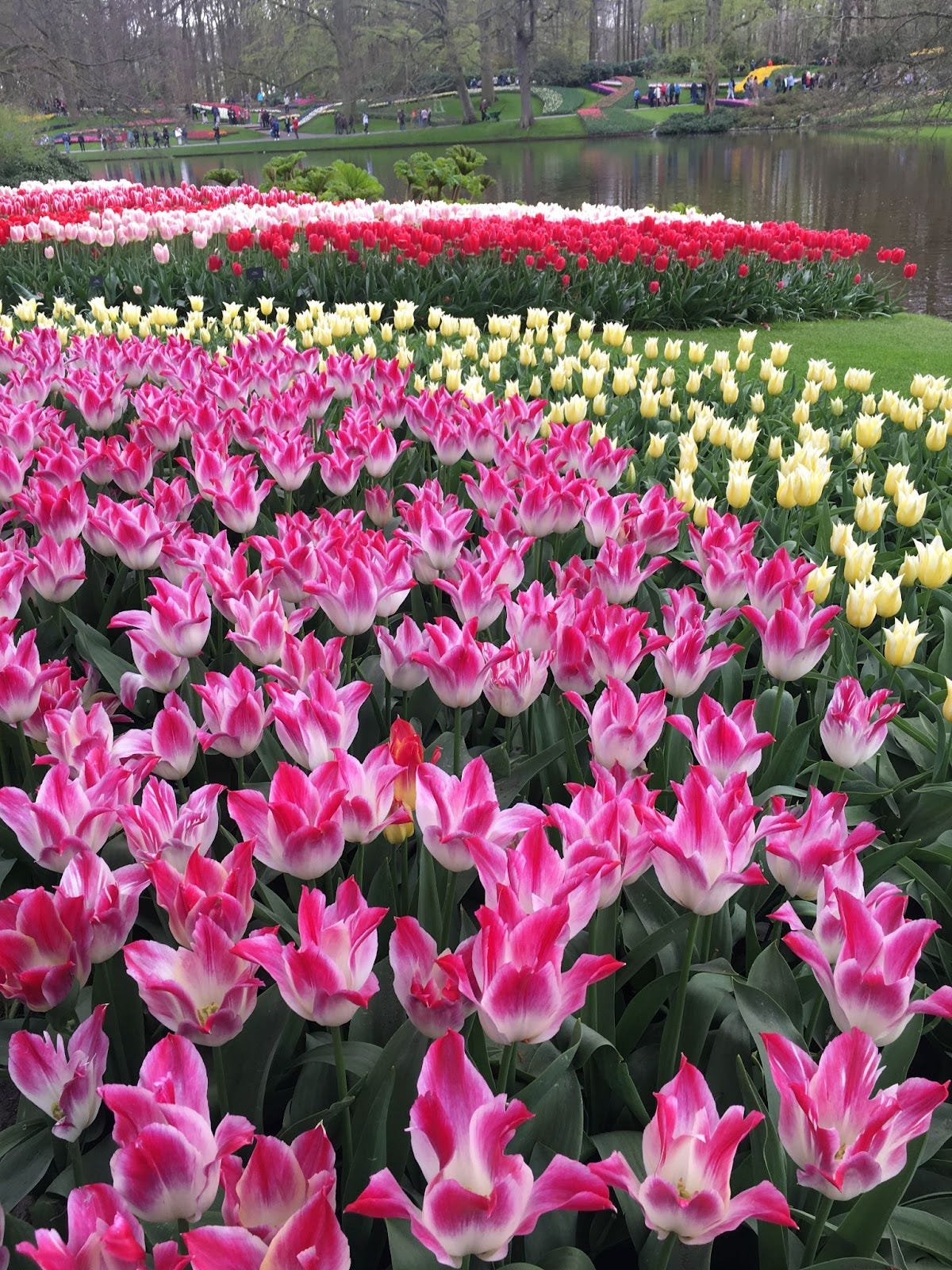Welcome
For the next few issues we will be featuring one European city per month and diving into the history as well as the culture of what to do and where to go.
This month we start off with Amsterdam.
Right now it is full Tulip season. We were lucky enough to go one year in April and it was amazing to see all the tulips around.
Today’s edition outlines the history of Amsterdam, shows the city dripping with tulips everywhere and we take a trip to the worldwide sensation at Keukenhof.
Enjoy Traveling Through History with me this week.
Michelle
Savvy Travel Historian
Because I wanted everyone to have the joy of seeing all the beautiful Tulip pictures from Keukenhof, I have made this issue for everyone and not pay walled for paid subscribers.
April: European Cities - Amsterdam
Background
Its name literally means ‘The Dam on the River Amstel’, Amsterdam is the capital and largest city in the Netherlands and is often referred to as the ‘Venice of the North’.
Originally a small fishing village in the 12thC, Amsterdam was the economic powerhouse of the Dutch Golden Age in the 17thC.
Located in the north-east of the Netherlands, Amsterdam can be accessed via train from Paris and London-St Pancras Station, and all major airlines fly into Schipol Airport.
History
There is evidence of farming settlers in the Amsterdam area from over three millennia ago and these developed during the Bronze, Iron and Roman Ages.
A dam constructed in the 10thC enabled land reclamation to begin.
The Van Amstel family are listed in documents dating back to 1019, when they held the stewardship over this area for the Bishop of Utrecht.
A major turning point was the All Saint’s Flood of 1170. It resulted in a wider estuary which enabled access to areas further afield and enabled trade to begin to develop.
By 1327, the name had developed into Aemsterdam.
Pilgrims came to Amsterdam after it was said a miracle was performed there in 1345, after which a rich pilgrimage life developed around the city. Up to 90,000 pilgrims visited a year.
In the 15thC Amsterdam became a busy trading route through the Baltic Sea especially in herring. Innovations in fishing vessels and bulk cargo ability meant that local fisherman could access herring shoals much further away and dominated the trade.
The herring industry and the associated materials, workers and products needed to run it established Amsterdam as a flourishing centre which laid the foundation for its role in the Dutch Golden Age.
Amsterdam, in an area known as the ‘low countries’, was part of the Hapsburg Empire and in the 16thC was under the Spanish monarchy.
During the Protestant Reformation, Philip II of Spain was a staunch defender of Catholicism and the Dutch revolted against this, the new taxes and the proceedings of the Inquisition.
The revolts lead in the Eighty Years’ War and ultimately Dutch independence.
Religious refugees from all over Europe (such as the Jews from Iberia, Huguenots from France) found safety in Amsterdam. The Flemish printing trade prospered and the city became known for its free press.
The Dutch Golden Age
Amsterdam became the wealthiest city in the Western world during the Dutch Golden Age.
It was during this time that the Dutch East India Company was set up here in 1602 and became the world’s first stock exchange when it began trading its own shares.
In 1609 the Bank of Amsterdam was established to service Dutch merchants and act as the country's ‘reserve bank’.
The Atlantic slave trade was active here until 1814, when the British Government asked the Netherlands to halt it.
The 18th and 19thC saw Dutch fortunes decline, mainly due to wars with England and France. During the Napoleonic Wats, Holland was absorbed into the French Empire.
The second ‘Golden Age’ was when the Industrial Revolution reached the city.
Amsterdam was connected to the Rhine when a canal was dug, and the North Sea canal further improved commerce with the rest of Europe.
World War II
The Netherlands was invaded by the Nazis in May 1940 and over 100,000 Dutch Jews were deported to concentration camps.
The most famous of these was Anne Frank who died in Bergen-Belson.
Anne’s diaries about her family hiding in concealed rooms behind a bookcase for two years were published after she died by her father Otto.
You can visit and see the annex in which Ann and her family lived.
Canadian forces liberated the city in May 1945.
Tulipmania
In the 17thC, from 1634-1637, the first speculative ‘bubble’ in history occurred in what became known as ‘Tulipmania’.
The introduction of the tulip, along with other new plants such as potatoes, peppers and tomatoes, were brought to Europe from the Ottoman Empire in the mid 1550s.
Over the next 100 years the Tulip became a luxury item and contracts to purchase bulbs from future crops became some of the first speculative investments people made. A contract could be sold four or five times (at increasing prices) without tulip bulbs ever being exchanged.
The Tulip and the Netherlands are synonymous. In April & May, they are everywhere, especially in Amsterdam and surrounds, like those above at the railway station near where we stayed.
Keukenhof
Located around an hour west of Amsterdam, the phenomenon at Keukenhof bursts into life from mid-March until mid-May.
Each year seven (7) million Tulips (and some other) bulbs are hand planted by a team of gardeners, who start in October and finish around the 5th December.
All bulbs are donated by over 100 growers, who want their bulbs displayed at the spectacular that receives over 1.5 million visitors during the eight week period. That amounts to around 26,000 visitors a day. In comparison, the Rijksmuseum has 6,000 visitors a day.
The park was established by local growers in 1949 as a way of showcasing their variety of flowers and in 1950 first opened to the public to instant success.
Located in the Lisse municipality, buses every 10-15 minutes run from 2 or 3 major railway stations in Amsterdam and is included in the combi ticket price.
If you love gardening, then a trip to Europe at this time of the year should definitely include a visit to Keukenhof, as you will see nothing like it anywhere else in the world.
It’s not known as the ‘Garden of Europe’ for nothing!
Further information and details can be found on their website:
Michelle is a Writer, Podcaster, Content Entrepreneur, Historian (Mst Oxon) and mother of 3 boys.
After 25 years in business and as the ‘Content Marketing Queen’ for over 13 years, she has helped countless small businesses understand and develop their content strategies and focus on a customer first approach.
On International Women’s Day in March 2024, Michelle hung up her crown so that she could be a Queen Maker to inspire and assist women over 45, who have children, rise up to be the Queens they were born to be and lead a fulfilling life. She does that at Excellence Takes Courage.
Savvy Travel Historian is her passion project, and her weekly newsletter is available on Substack, Paragraph and Mirror. The latter two allows you to collect each Issue as an NFT.
Follow me on these social media platforms:




